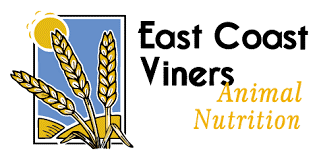“The hogg trade is flying at the moment, about 80p/kg up on the year and there’s potentially good prices for those with hoggs still to finish,” says Calum Littlejohn, livestock nutritionist at East Coast Viners. “With so many farming costs high at the moment, it can be tempting to minimise bought-in concentrates or sell hoggs that are not completely finished; however, it will pay to finish hoggs well at current prices with high energy nutrition in the last few weeks for the best kill out performance.”
Producers who have kept lambs for longer to take advantage of grazing or for the historical strong prices around Islamic festivals and Easter need to ensure the hoggs are getting sufficient energy and protein to sustain gaining weight in the final stages. Supplementing forage with cereal-based feeds and minerals help to minimise health issues and improve feed conversion ratio (FCR):
“The FCR of the hoggs is one of the key factors that drives the profitability of your sheep enterprise but is often overlooked when you look at the price of buying in concentrates,” says Calum. “FCR is at its optimum when the lambs are youngest and starts to decrease as they get older, and they need more energy to maintain weight gain.
“With feeding costs still relatively high, farmers may be keen to spend less on feed but the quality of the feed will impact the feed conversion ratio and, in turn, the profit margin, so you need to make sure that whatever you are buying is of the highest quality which may not necessarily mean the cheapest.
By feeding hoggs a good quality finisher pellet, producers could achieve a FCR of up to 5:1; in other words, for every 5kgs of feed consumed equates to 1kg of liveweight gain:
“Check the labels and look out for a 15% protein diet, with quality proteins such as soya and wheat distillers’ dark grains. Also make sure that high energy cereals are near the top of the label. Cheaper cereal co products can be used as fillers but may not be as palatable or energy dense, both of which help consistent weight gain. You also want a full mineral package along with ammonium chloride to reduce the risk of urinary calculi in male hoggs.”
When introducing hoggs to concentrate feeding, it should be done gradually over a couple of weeks through trough feeding. Gradually step the feed rate up until the sheep are on adlib feeding. This helps to reduce gorging on concentrates and therefore reduces the chances of acidosis. Once the sheep are onto the feeding, care should be taken especially if ad lib to make sure that the feeders are always full. This reduces smothering of sheep when feeders are topped up and helps reduce the acidosis risk. Access to fresh clean drinking water is also essential
Graham Smith, who farms a mixture of Cheviots and Blackfaces at R C Myles & Son, Dalbog, said:
“We keep our sheep for a long period as we have a mixture of grass and forage crop grazing, but we focus on concentrates in the last few weeks of finishing. They need that bit extra, and it finishes them just right. We’ve seen that cheap can be expensive when it comes to nutrition, and by spending a bit more on the right quality feed means a better FCR and finishing weight and ultimately the better return we get per hogg.”

